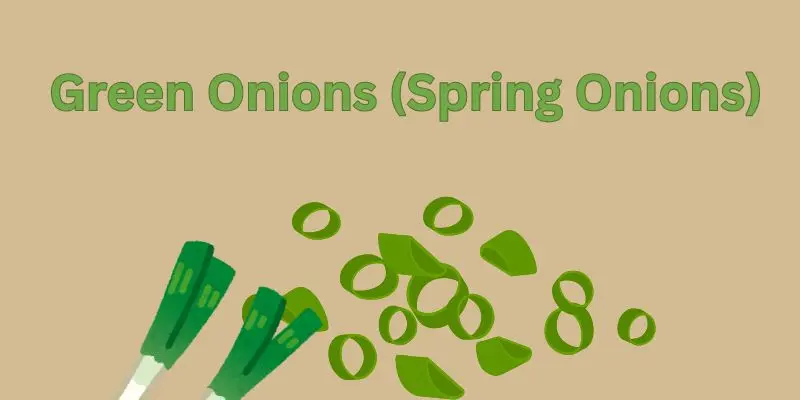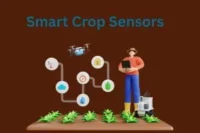Foods That Can Be Grown Indoors .Fresh, Fast, and Pesticide-Free
Published: 16 Jun 2025
Have you ever stared at a bunch of wilted greens in your fridge and wondered why they spoil so fast — even when they’re labeled “fresh”? Or found yourself avoiding the grocery store because you’re tired of buying the same overpriced produce week after week? Maybe you’ve thought about growing your own food, but you’re not sure where to start — or if it’s even possible in a small indoor space. The idea sounds exciting, but also… confusing. What grows well indoors? Does it need sunlight? Special tools? Don’t worry — you’re not alone. Let’s break down exactly which foods you can grow inside your home — easily, affordably, and with results you’ll actually eat.
So, guys, without wasting time, let’s jump into the article to learn Foods That Can Be Grown Indoors – Fresh, Fast, and Pesticide-Free
Why You Should Grow Food Indoors
- Growing indoors gives you full control over your food’s cleanliness and quality.
- You avoid harmful pesticides and chemicals common in store-bought produce.
- It saves time and money spent on buying herbs and greens that often go bad quickly.
- Indoor gardening creates a peaceful, therapeutic environment in your home.
- It helps reduce your carbon footprint and supports a more sustainable lifestyle.
- You get to eat the freshest food possible — harvested just before mealtime.
Top Foods That Can Be Grown Indoors
Tired of wondering what’s safe to grow inside your home? These easy, space-saving foods thrive indoors — no backyard required, just a little light and love.
1. Green Onions (Spring Onions)
- Can be regrown easily from kitchen leftovers or bulbs in water or soil.
- Require very little light, making them perfect for windowsills.
- They grow rapidly and can be harvested multiple times.
- Ideal for beginners and busy people alike.

2. Lettuce (Romaine, Leaf, Butterhead)
- Thrives in containers and shallow trays with minimal soil.
- Grows fast and can be harvested in stages for continuous supply.
- Requires moderate light; supplemental lighting boosts yields.
- Ideal for quick salads and daily nutrition.
3. Basil, Mint, Cilantro, Parsley (Fresh Herbs)
- Small-space friendly — grow them in jars, cups, or window boxes.
- Excellent flavor boosters for home-cooked meals.
- Can be grown all year with just basic light and watering.
- Aromatic properties also help freshen indoor air.
4. Strawberries (Mini or Alpine Varieties)
- Best grown in hanging baskets or hydroponic vertical towers.
- Need ample sunlight or full-spectrum LED grow lights.
- Provide sweet fruit even in small spaces.
- Require careful watering and good drainage.
5. Chili Peppers
- Compact and ideal for sunny indoor spots.
- Thrive in pots near warm windows or under artificial lights.
- Produce a high yield with minimal space requirements.
- Add visual interest and color to indoor setups.

6. Potatoes (In Containers or Grow Bags)
- Can be grown in deep containers with loose, well-drained soil.
- Start with sprouted potatoes and build soil up as they grow (“hilling” technique).
- Yield good harvests even in limited space.
- Requires consistent watering and full sun exposure.
7. Garlic Greens
- Grown from garlic cloves planted in small pots or jars.
- Harvested as flavorful greens rather than full bulbs.
- Grow quickly and require little care.
- Great for garnishing and boosting immunity.
8. Cherry Tomatoes (Compact/Dwarf Varieties)
- Require a sunny spot or LED lighting for fruiting.
- Grow well in larger pots with proper support structures.
- Dwarf varieties are ideal for apartments and small rooms.
- Regular pruning and pollination increase productivity.
9. Microgreens (Radish, Broccoli, Peas, etc.)
- Grow in trays without traditional soil — use coconut coir or moist paper towels.
- Sprout and become harvest-ready within 7–10 days.
- Contain concentrated nutrients and antioxidants.
- Excellent choice for health-conscious households.
10. Carrots (Mini or Round Varieties)
- Grown in deep containers with fine, well-draining soil.
- Miniature varieties like “Thumbelina” thrive indoors.
- Require consistent moisture and at least 6–8 hours of light.
- Harvested in as little as 6–8 weeks.
Pro Tips to Grow Indoors Successfully
- Choose containers with proper drainage to avoid root rot and mold.
- Use high-quality potting mix or soilless mediums like coco peat for better results.
- Install LED grow lights if natural sunlight is limited or inconsistent.
- Maintain indoor temperatures between 18°C and 24°C for most plants.
- Keep air moving gently with a fan to reduce fungal growth.
- Feed plants with organic or indoor-specific fertilizer every 2–3 weeks.
- Water at the base, not the leaves, to prevent mildew and disease.
The Emotional Impact of Indoor Food Gardening
- Watching something grow that you planted brings daily joy and satisfaction.
- Picking fresh food from your own space builds a deeper connection with nature.
- The routine of watering and tending your plants helps reduce anxiety and stress.
- Sharing homegrown produce with family and friends brings pride and fulfillment.
- It’s a reminder that even in small spaces, big change is possible — starting with your food.
FAQs about Foods That Can Be Grown Indoors
Here are some of the most frequently asked questions about Foods That Can Be Grown Indoors .Fresh, Fast, and Pesticide-Free
Yes, you can! Many foods like herbs, leafy greens, and even tomatoes can grow indoors with just a little space, some light, and regular watering. You don’t need a backyard — just a windowsill or a well-lit corner works.
It depends on your space. Some plants only need a few hours of indirect light, while others may need extra help from grow lights. A south-facing window or an LED grow light can easily solve this problem.
Yes, they do produce real, edible food! You can grow everything from lettuce and green onions to cherry tomatoes and strawberries indoors — many people do it successfully every day.
Not at all. You can start small with just pots, soil, and kitchen scraps like green onions or garlic. For better results, you can later add simple tools like a grow light or a small fan.
Microgreens, green onions, and lettuce are some of the fastest-growing indoor foods. Many of them are ready to harvest in just 7 to 14 days.
Yes, certain foods like green onions, lettuce, and garlic greens can regrow from the parts you normally throw away. Just place them in water or soil and watch them sprout again.
Conclusion:
Growing food indoors offers a simple, space-saving way to enjoy fresh, chemical-free produce year-round. The content highlights easy-to-grow options like green onions, lettuce, herbs, tomatoes, and microgreens—all of which thrive in small containers with minimal light or equipment. It explains how these foods support health, reduce grocery costs, and give control over what you eat. Understanding which foods grow best indoors empowers beginners to start small and still enjoy quick, nutritious harvests from the comfort of home.

- Be Respectful
- Stay Relevant
- Stay Positive
- True Feedback
- Encourage Discussion
- Avoid Spamming
- No Fake News
- Don't Copy-Paste
- No Personal Attacks

- Be Respectful
- Stay Relevant
- Stay Positive
- True Feedback
- Encourage Discussion
- Avoid Spamming
- No Fake News
- Don't Copy-Paste
- No Personal Attacks





